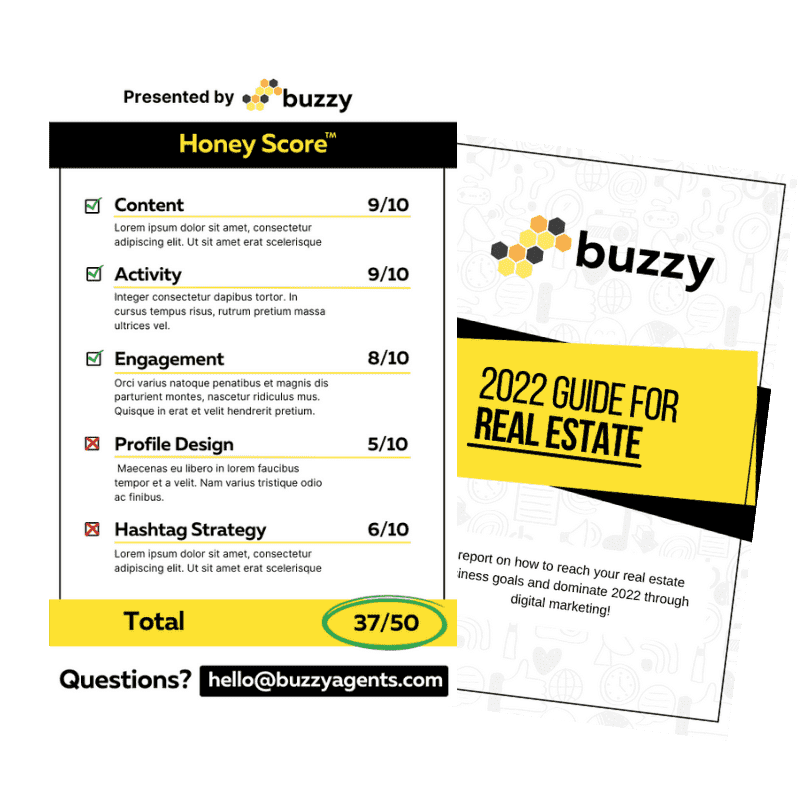Real Estate Advertising: Quick Guide For Promoting Listings
Let’s be real, real estate advertising can be a daunting task, especially if you’re trying to promote your listings. The competition is fierce, there are often too many properties on the market in any given area, making it difficult to stand out.
However! With the right approach, real estate advertising can be made SUPER easy, and better yet, profitable.
In this article, we’re going to discuss what’s effective in the real estate advertising realm today. And by the end of it — you’ll have a quick guide (a blueprint) to help you promote your listings.
So, let’s dive in and discover how you can make real estate advertising a breeze! First off, you need to know the bare essentials.
What is Real Estate Advertising?
Real estate advertising refers to the process of promoting a property for sale to potential buyers. But where can real estate agents advertise their listings?
Well, there are plenty of options in store. Like social media platforms, print ads (the ones you read in real estate magazines, or newspapers – if they still exist!), as well as in real estate websites, and more.
The Goal of Real Estate Advertising
The goal is really simple, you don’t have to overthink it. Homebuyers want enough information about the property to make an informed decision to view it in person. Then potentially buy it afterward.
That said, when promoting your listing make sure to include these details:
- Price: Homebuyers want to know the price of the property to determine if it fits within their budget.
- Location: Location is a no-brainer to include. It must be in your ad. Nobody will buy a house without knowing which state it’s located in, the city, and the neighborhood.
- Property Details: Real estate buyers want to know the size of the property, number of bedrooms, and bathrooms. And other key features such as outdoor space or parking, etc.
- Photos: High-quality photos are important for giving homebuyers a sense of the property’s appearance and environment.
- Property History (Story): Buyers may want to know the property’s history. Including the time it was built, renovations or upgrades, info about the previous owners, and other relevant information.
- Contact Information: Lastly, there must be a way to get in touch with the seller, or the real estate agent. So include a contact number, an email, or add a contact form.
Overall, the goal of real estate advertising is to provide information to create interest in a property … and invite potential buyers to view the property themselves.
Is Traditional Real Estate Advertising Dead?!
It’s no longer an argument that traditional real estate advertising methods aren’t that successful. We’re talking about print advertisements in newspapers, billboards, direct mail, flyers, and postcards. They are becoming less effective in today’s digital age.
As more and more people turn to the internet every day to search for properties — shifting your focus to online advertising is a smart move! In fact, 43% of real estate buyers found the property they bought online.
However, traditional real estate advertising methods may still have some value. So what are you supposed to do? We suggest doing what most top real estate agents and companies do…
…and that is to advertise using both! Over time, you’ll find a salty-sweet balance between traditional and digital advertising.
The Future & Present of Real Estate Advertising
Real estate advertising is rapidly evolving with the advancement of technology. And it’s becoming increasingly important for real estate professionals to stay ahead of the curve.
It’s been reported that 63% of homebuyers in 2020 made an offer on a property without seeing it in person, that’s a 215% increase since 2015. And the percentage is in constant growth.
That clearly shows that the future and present of real estate advertising are driven by digital marketing. Real estate agents who embrace the digital trend and invest in new technologies will have a competitive edge.
Real Estate Social Media Marketing
Selling a home can be done online today easily, and it’s way more effective than traditional methods! How so? For example, Facebook and Instagram real estate ads can be targeted. This means you can show your ad to people who are actively looking to buy a home in your geo-farm.
And it’s cost-effective. You see, social media marketing does cost money – but it’s significantly more affordable to advertise on Facebook, Pinterest, or Instagram than traditional advertising products, like TV slots, billboards, brochures, etc.
Real Estate Ads Blueprint
Alright, we covered the fundamentals of real estate advertising, and what’s working today. But how can you actually create an ad to promote your listings?
Simply, follow this blueprint to create compelling real estate ads for your listings that attract potential buyers:
- Attention-Grabbing Headline: The headline is the first thing potential homebuyers will see in an ad. So it’s important to come up with an eye-catching headline. Want an example? Here you go: “Stunning Modern Family Home Nestled in the Heart of New York.”
- High-Quality Photos: Showcase the property in its best light with beautiful photos. Hire a professional photographer if necessary, and include a mix of wide shots and close-ups to give a complete picture of the listing.
- Accurate Property Information: Make sure to provide accurate and up-to-date information about the property. Including the price, location, number of rooms, square footage, and any unique features.
- Compelling Description: Write an appealing description that highlights the property’s key selling points. Use vivid words that paint a clear picture in the reader’s mind.
How about an example? Here we go: “Escape to your own 5-acre estate private paradise. Surrounded by lush greenery and breathtaking mountain views, this stunning 4-bedroom, 4-bathroom home offers the perfect combination of tranquility and luxury. The main living area features a soaring stone fireplace, vaulted ceilings, and expansive windows that flood the space with natural light. The gourmet chef’s kitchen…” — Alright, that’s about enough, we’re not going to describe the entire house. You get the picture.
- Calls to Action: Include clear calls to action, such as “Schedule a viewing today!” or “Contact us for more information.” These calls to action should be prominent and easy to act upon.
- [Optional but recommended] Video Tour: Consider using a video tour of the listing instead of using photos. To give potential buyers a more immersive experience. From a marketing perspective, we recommend testing both approaches to see what works best.
In Conclusion
Real estate advertising is a constantly evolving domain, and keeping up with digital marketing trends is crucial to selling your listings. Andrea Geller – a residential real estate broker – said it best: “The real estate industry is constantly changing, and it’s up to the individual to determine how they want to be part of that change.”
So we advise you to start advertising through social media platforms. It’s what has proven to convert today.
And luckily, you don’t have to go through the storm alone and try to figure out everything on your own. Take advantage of our battle-tested real estate ads blueprint and start generating leads for your listings.
What now? You can create real estate ads on your own, but we know that can eat up a lot of your valuable time, and zap away your energy. But you can always depend on a team of real estate online marketing experts. So If you’re planning to advertise your listings anytime soon, contact our team to help you create powerful real estate ads for your business.
Share This Story, Choose Your Platform!
Recent Posts
Growing Brand Awareness in Real Estate
Introduction In today's competitive real estate landscape, establishing a strong brand presence is essential for success. [...]
Using AI Avatars to Scale Your Real Estate Brand
In today's digital age, personal branding has become a crucial aspect of success in the real [...]
Trending Real Estate Reels to Go Viral With in 2024
In our fast-paced media world, trends change often. We want to help keep you up to [...]
Growing Brand Awareness in Real Estate
Introduction In today's competitive real estate landscape, establishing a strong brand presence is essential for success. [...]
Using AI Avatars to Scale Your Real Estate Brand
In today's digital age, personal branding has become a crucial aspect of success in the real [...]
Trending Real Estate Reels to Go Viral With in 2024
In our fast-paced media world, trends change often. We want to help keep you up to [...]
The Real Estate Agent’s Guide to Success with Lead Generation through Paid Ads
As a real estate agent, you already know that generating leads is the lifeblood of your [...]








